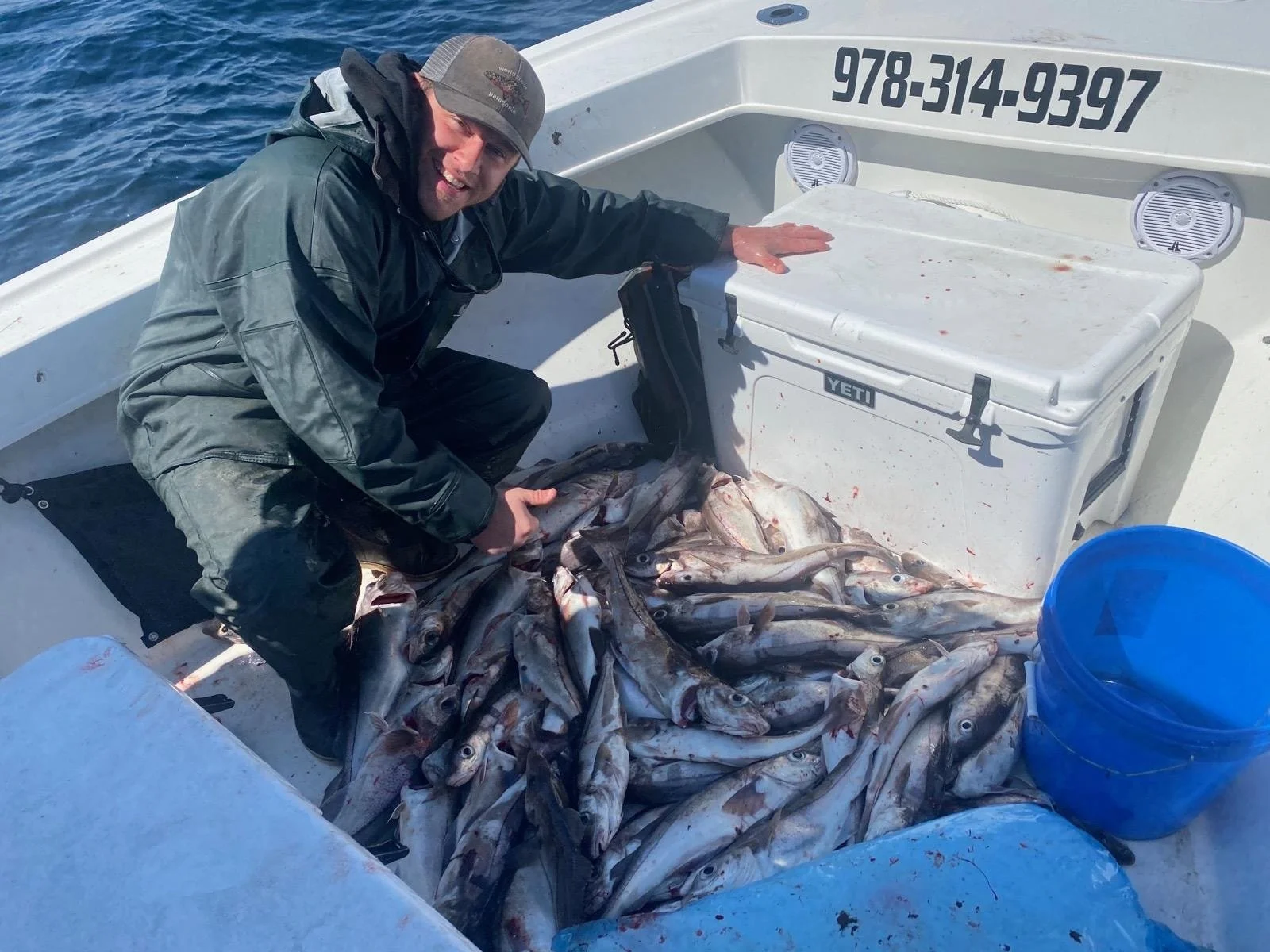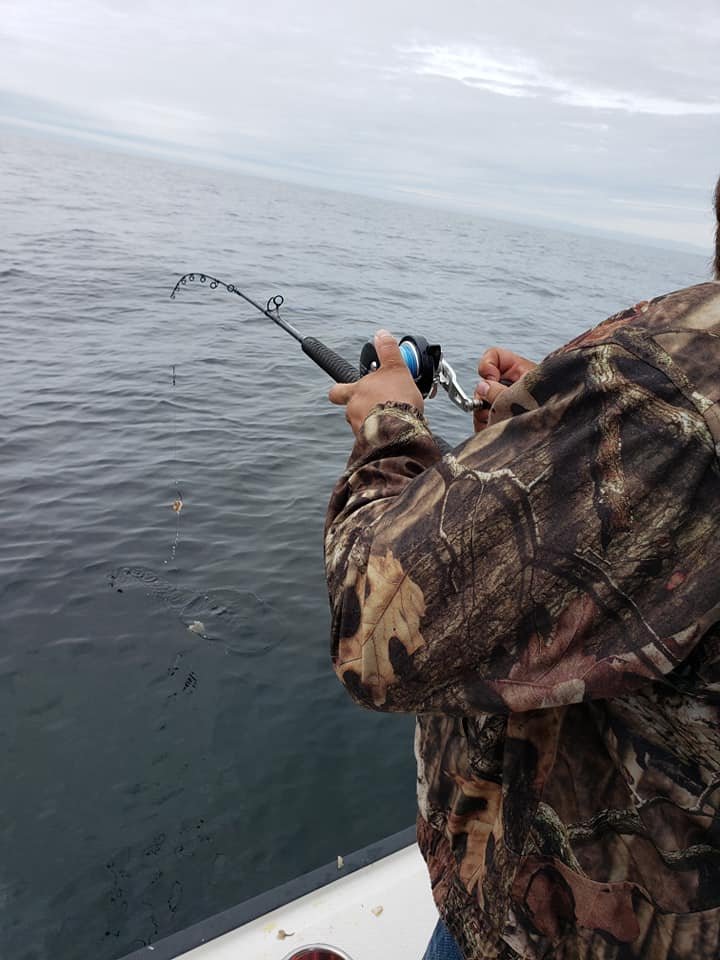It Begins! Haddock Opens April 1st!
Early spring haddock fishing is a perfect way to shake off the cobwebs of winter and fill the cooler!
We made it! The winter is over, and mother nature is bringing herself back to life! Early spring is a shot of adrenaline for any northern outdoorsman. We can finally look forward to longer days, warmer weather, and open water. By the end of March, most local ponds and rivers will be stocked and fishing well for those getting in on the sweet water action. April 1st is the opening of haddock season, and for those eager anglers who have their boats uncovered, it can lead to some of the best haddock fishing on the planet, right in our backyard. Later in the month, as the water temperature in the river rises to 50 degrees, shad fishing begins to heat up. If you have never tried shad fishing before, it is a blast! We have an excellent podcast coming out in a couple of weeks with Eric Roach, which will tell you all you need to know!
Today, I want to talk about early season haddock fishing! The Mouths of the Merrimack crew are planning a trip this weekend and are more excited than pre-teen girls going to a Justin Beiber concert. This is the shit that gets our blood pumping. We love all types of fishing, but you can't beat the adventure of offshore fishing in the vastness of the open ocean.
Before we get into how we target haddock, you might pick up some great tips by checking out Podcasts with Capt. John Parkhurst and Matt Ayer from the MA Division of Marine Fisheries. These two guys talk for a total of three hours with great information about all kinds of fishing with some unique takes on haddock. Also, here are this year's regulations for haddock and cod (For those out early enough, we have a two week cod season this spring):
Haddock: April 1st - April 30th: 17" Minimum Length 15 per person
Haddock: May 1st - Dec 31st: 17" Minimum Length 20 per person *Not Offical Yet*
Cod: April 1 - April 14: 21" Minimum Length 1 per person
For our Members, I have also provided my recent slideshow "Haddock Heaven" I did for the Plum Island Surfcasters and Rhode Island Saltwater Angler's Association (RISAA) in the PDF Section. In addition to access to this entire article, members will get a follow-up report of how our day went with pictures, info on all our gear we used, and Capt. Mike's Haddock Recipes.
Early season haddock fishing in the Gulf of Maine is somewhat of a hidden gem. I genuinely feel it is some of the best haddock fishing on the planet, and nobody talks about it. I think the biggest reason is access to the fishery. Think about it. Haddock season historically starts on or around April 1st, and most marinas north of Boston do not put their docks in until May 15th. So unless you can trailer, you're high and dry for six weeks right off the bat. Another issue is being flexible with your work schedule to take advantage of the few days that allow smaller, trailer-able vessels offshore. April is notorious for slapping us in the face with cold fronts like we are Chris Rock hosting the Oscars. We must take advantage of weather windows at a moment's notice. And lastly, to have your boat ready for April 1st, you have to get it up to speed starting in mid-March. For mid-March, I make sure my engine, electronics, and fuel systems, are all in perfect working order. I arrange my boat the way I want, knowing that I'll be strictly haddock fishing for at least a month. I will save the bottom paint, deep clean, and waxing for later in April. I won't be at the dock for another six weeks, so I have time to take care of all the cosmetic stuff before the boat is "home."
Spring haddock fishing, to me, is an absolute blast. It's our first trip on the ocean, usually me and some buddies on a shakedown cruise. It also marks the beginning of our saltwater boating season, and there is a world-class fishery to boot! It comes at a cost, however. You will be cold, wet, sore, and tired, but your reward is a cooler STUFFED with tasty haddock. At least, that's what we hope as we point our bow east towards the ledge.
Haddock fishing is relatively simple. We will head off to some of the humps in Ipswich Bay and Jeffries Ledge in the spring and focus on the "high spots" on the structure, anywhere between 150 - 180 feet deep. As you motor up on the spot, take a look at your fish finder for any rocks, schools of baitfish, or haddock marks and take note of their relation to the structure (On top, off the sharp edge, along the long sloped edge, etc...) and set up your drift or anchor.
When bottom fishing in the Gulf of Maine, you should use a conventional reel spooled with 50 - 60 lb braided line. Here are some recommendations, with the top 3 in order.
The Shimano Torium 16 PG is my favorite haddock reel
Shimano Torium 16/20 PG
Segler LGN
Penn US Senator
Shimano Torium 16/20 HG
Okuma Tesoro 10
Okuma Cortez 10
Daiwa Saltiga 10
Fishing for haddock is predominately bait fishing, negating a need for the old-school 8 ft cod rods. Instead, I opt for a short (5'6 - 6'6) tuna jigging style rod for extreme lightweight, excellent feel, and softness to bring a haddock up from the depths without shaking off. My haddock rod and reels are some of my most versatile rods throughout the season. We can use them for bottom fishing, heavy trolling or chunking striped bass rods, light-tackle shark fishing, tuna jigging, tuna trolling, and jigging for bait offshore. Using braid, smaller conventional reels, and light but strong rods allow us to use the combos in multiple situations. I use a combination of Okuma Azores and Ugly Stik Tiger Jigging Rods, but there are many other options depending on your price range.
The Torium and Jigging World Black Widow rod makes a strong, yet light haddock fishing setup.
Haddock are notorious for their propensity for headshakes and ripping off the hook as you reel them off the bottom. Their rubbery lips and bouncy fight must be accounted for when tying leaders and choosing tackle so you don't lose fish on the way up. Since braid has no stretch, it is even more critical that you use a slow-action rod like a jigging style rod with a long monofilament leader to add some stretch, abrasion resistance and to make untangling lines MUCH easier. I tie a 50-pound piece of mono about 25 feet long directly to my braid via an FG Knot (Slim Beauty and Uni-to-Uni Knots are other line to line connections I use frequently). Then, I slide on a bead (so people will not reel up through the guides) and tie on a Tactical Anglers 125# clip. My clip allows me to tie on pre-made high-low rigs and slip on my chosen weight.
The typical haddock rig is called a high-low rig. A high-low rig consists of two hooks tied about 12" apart with a loop at the bottom for a sinker. Capt. John has a great video on how to tie a high-low rig using a jig, and I made another video on how to tie it without a jig. Please check out the videos below to see how to tie a high-low rig!
Your weight selection will depend on how fast you are drifting. I keep the weight between 8 - 24 ounces on my boat when haddock fishing but generally use between 10 and 16 oz. If I have to go more than 16 ounces to hold the bottom, I will usually anchor instead of drift. (My Minn Kota trolling motor with its Spot Lock feature allows the boat to “anchor” without actually deploying an anchor. It is my favorite thing I have ever put on my boat) The most important thing is maintaining contact with the bottom as you drift. As the boat drifts, the angle of the line increases. I will continue to pay out line to maintain the bottom. Once the angle is about 40 degrees, I will reel up and drop again.
For baits, we generally use clams. In fact, for our trip, we can thank John for driving to Gloucester today and picking up 200 pounds of "special clams" for our charters this year. So Manolin and Parkhurst Charter's guests, we hope you appreciate the effort to get you the best! Another great bait I have been using the past few years is squid. I'm sure you can buy them locally, but we usually go down to the cape for a day, go squidding, and freeze them for haddock bait. Squid works great and stays on the hook forever! Don't forget to bring a couple of mackerel rods! A lot of time early in the year, you can get into mackerel offshore before they come inside. This mackerel fill-up saved my early season striper charters last year during a consistently windy schoolie season. I used all that mackerel chunking on days when it was too windy to cast. I mention mackerel because fresh chunks make excellent haddock bait, especially if you are on a pile of bigger fish! I have always had success with shrimp, but they are a real pain to keep on the hook when letting them down to the bottom.
Ok, the hard part is over. Arm your rod with fresh bait and send it overboard, down to the ocean floor. Once you get a hit and feel the weight of the fish (notice I didn't say a tap. You should feel a deep tug before you set the hook), set the hook and reel your tip down to avoid slack. Avoiding slack is the name of the game when reeling up haddock, so NO ROD PUMPING. With a powerful reel like the Shimano Torium PG series (Make sure it is the PG model!) or a Seigler LGN, winching up haddock is a breeze. You need to hold the rod comfortably and let the reel and the soft rod blank do all the work. It's a long way up, so be smooth, slow, and steady as you reel. Fighting the fish like this will drastically decrease the chances of a pulled hook.
If your haddock is a keeper, we like to cut the throats and bleed them out before throwing them into a cooler full of ice. Bleeding the fish makes for filets so fresh you could slap them! Keeping fish on ice also makes it much easier to filet a pile of haddock. Speaking of fileting, make sure you have a razor-sharp knife and a filet glove. If working on a party boat for six years taught me anything, it is vital to use a filet glove. The glove helps grab and hold onto the slimy fish fillets and protect your hand from the blade. I do not cut any fish without my trusty filet glove.
That's the fundamental basics of haddock fishing in the springtime. We are planning on going out there on Sunday and will be able to make some videos, pictures, and more explicit content to add to this blog. In the meantime, don't forget to check out related items to haddock fishing via:
Podcast #3 with Capt. John Parkhurst
Podcast #5 with Matt Ayer
Haddock Heaven PDF
Video - How to Tie a High Low Rig with a Jig
Video - How to tie a High Low Rig without a Jig
Cod/Haddock Location Map
Tight Lines,
Capt Chris






